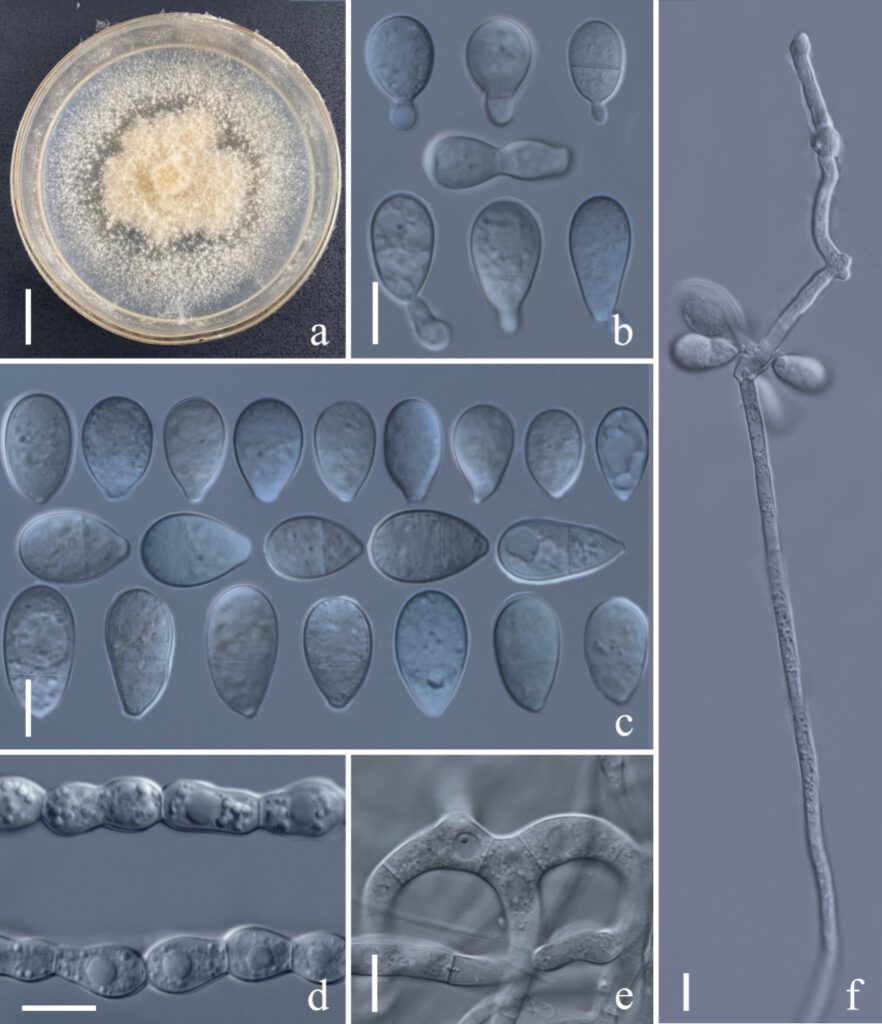Arthrobotrys jinpingensis F. Zhang, X.Y. Yang & K. D. Hyde, sp. nov. FIGURE 2.
MycoBank number: MB; Index Fungorum number: IF; Facesoffungi number: FoF 10761;
Etymology: The species name “jinpingensis” refers to the name of sample collection site: Jinping county, Gejiu City, Yunnan Province, China.
Description: Colonies on PDA white, cottony, growing rapidly, reaching a colony diameter of 60 mm after 10 days incubation at 27°C. Mycelium colourless, composed of septate, branched, smooth hyphae. Conidiophores hyaline, erect, septate, unbranched, producing several separate nodes by repeated elongation of conidiophores, with each node bearing 2–11 polyblastic conidia, 225–509 µm (x̅ = 348.2 µm, n = 50) long, 3–8.5 µm (x̅ = 4.9 µm, n = 50) wide at the base, gradually tapering upwards to 1.5–3 µm (x̅ = 2.1 µm, n = 50) wide at the apex. Conidia hyaline, smooth, obpyriform or drop-shaped, 0 or 1-septate, broadly rounded at apex, truncate at base, some conidia with a bud-like projection at base, 11–26.5 × 6.5–14.5 µm (x̅ = 18.6 × 10.8 μm, n = 50). Chlamydospores hyaline, smooth, cylindrical, ellipsoidal, in chains, 7–18.5 × 5.5–9.5 µm (x̅ = 13.3 × 7.4 μm, n = 50). Capturing nematodes with adhesive network.
Material examined: CHINA, Yunnan Province, Gejiu City, Jinping county, from Terrestrial soil, 19 April 2017, F. Zhang. (DLUCC21, holotype!).
Sequence data: ITS: OM855569

FIGURE 2. Arthrobotrys jinpingensis (DLUCC21, holotype!). (a) Colony. (b, c) conidia. (d) Chlamydospore. (e) Trapping-device: adhesive network. (f) Conidiophore. Scale bars: (a) = 1cm, (b–f) = 10µm.
